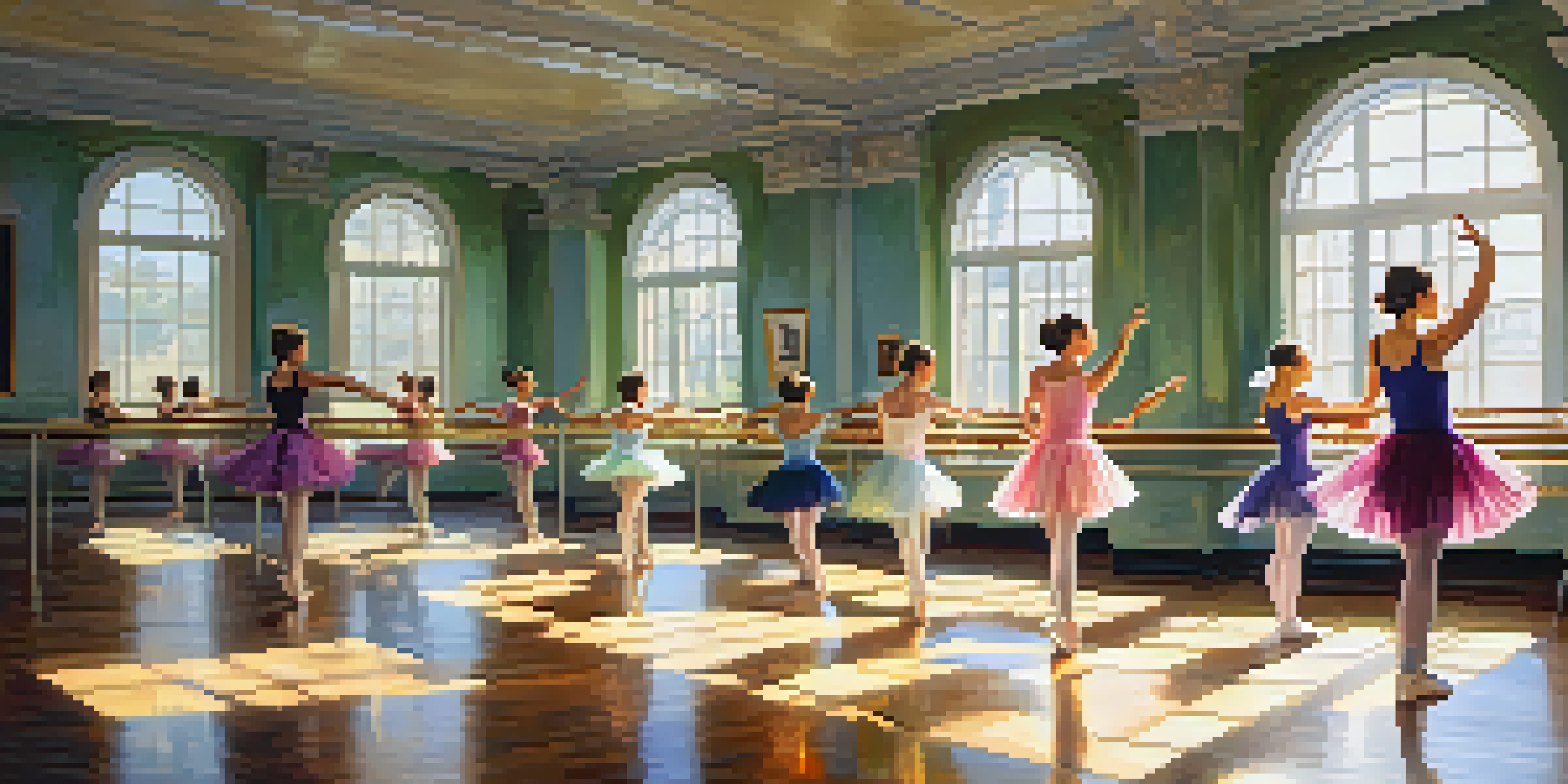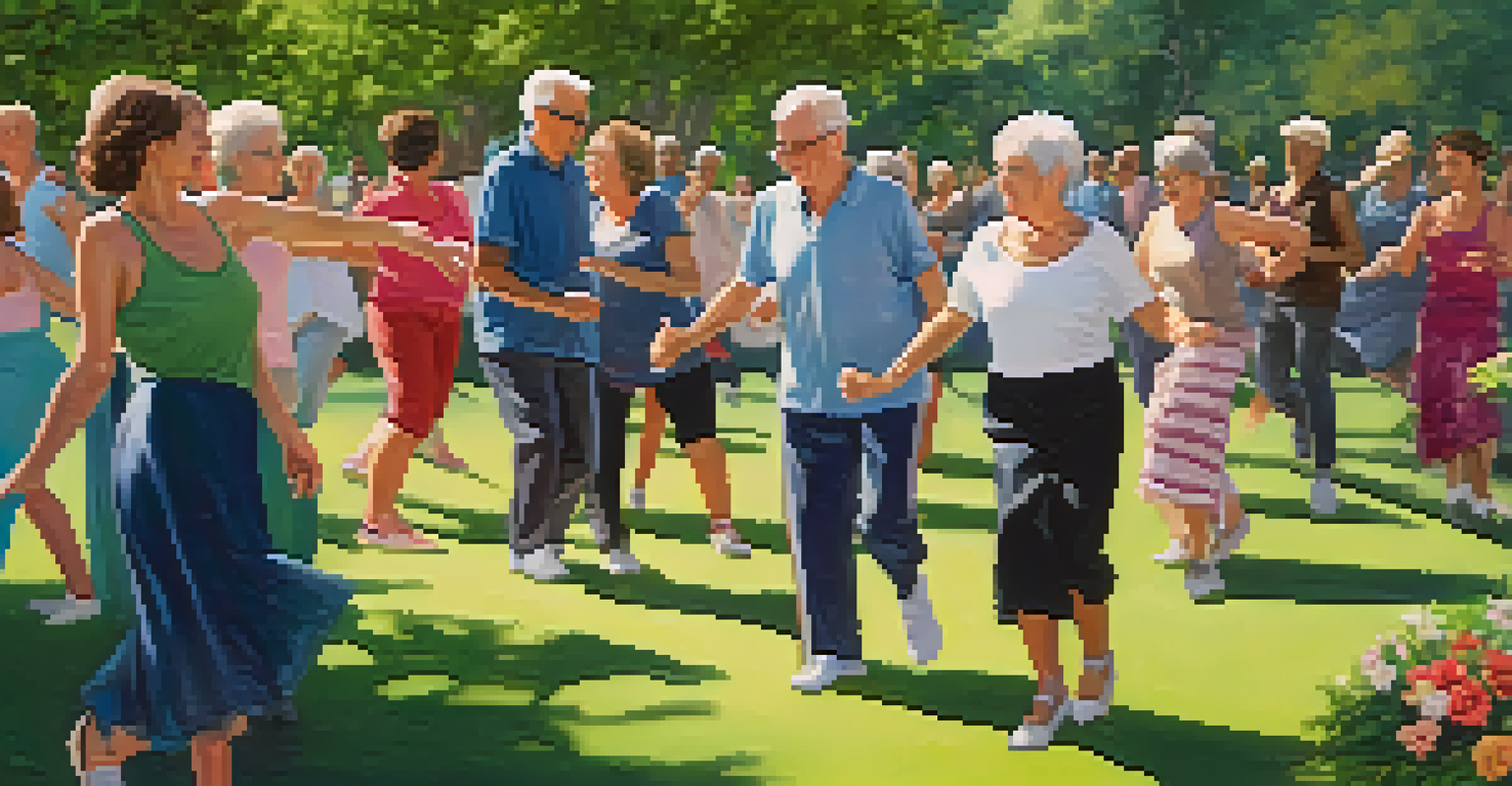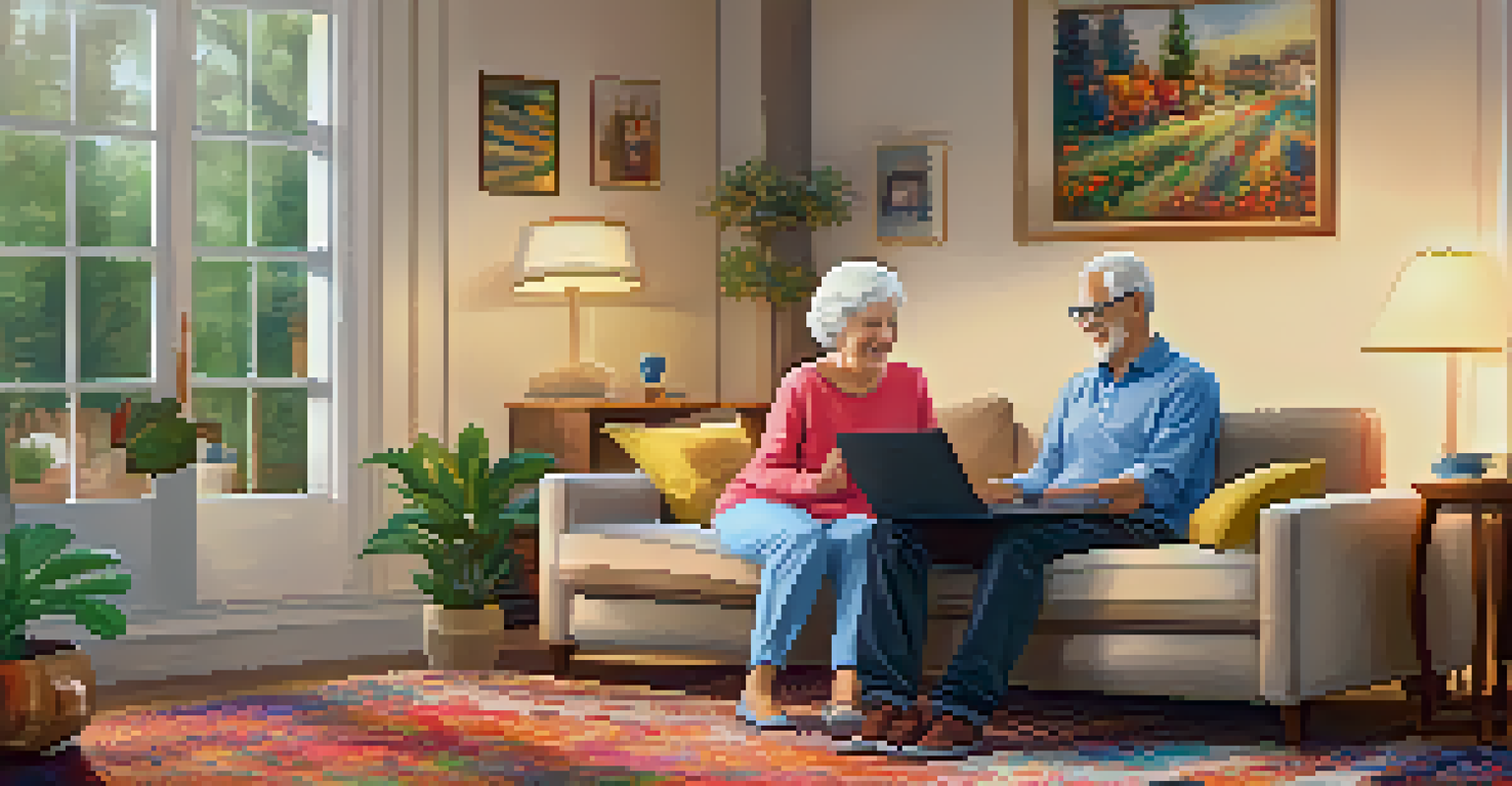The Role of Flexibility in Dance for the Aging Body

Understanding Flexibility and Its Benefits in Dance
Flexibility is the ability of muscles and joints to move through their full range of motion. In dance, flexibility allows for graceful movements and can enhance performance. For aging bodies, maintaining flexibility is crucial as it helps prevent injuries and promotes overall health.
Dance is the hidden language of the soul.
As we age, our muscles can tighten, and joint movement may become restricted. Dance offers a fun and engaging way to incorporate stretching and flexibility exercises into daily routines. This not only aids in maintaining mobility but also helps in improving balance and coordination.
Moreover, flexibility in dance can lead to improved posture and alignment. Good posture is essential for reducing strain on the body, especially for older adults who may be more susceptible to discomfort. By enhancing flexibility, seniors can find greater ease in their everyday movements, from walking to getting up from a chair.
The Physical Benefits of Dance Flexibility for Seniors
Engaging in dance helps to stretch and strengthen muscles, contributing to better physical health. For seniors, this can translate to reduced stiffness and increased range of motion in joints. The rhythmic movements of dance can also stimulate blood circulation, which is vital for maintaining healthy muscles and joints.

Additionally, practicing flexibility through dance can alleviate age-related conditions like arthritis. Gentle stretching and fluid movements can ease joint pain and stiffness, allowing for more comfortable living. This makes dance not just a form of art but a therapeutic activity as well.
Flexibility Enhances Dance Performance
Flexibility improves graceful movements and overall performance, especially important for seniors to maintain mobility and prevent injuries.
Incorporating flexibility training into dance routines can also boost energy levels. When muscles are flexible and joints operate smoothly, seniors are likely to feel more energetic and less fatigued. This newfound energy can encourage them to engage in other activities, fostering a more active lifestyle.
Mental and Emotional Benefits of Dance Flexibility
Dance is not just about physical movement; it also offers significant mental and emotional benefits. Engaging in dance can elevate mood and reduce feelings of anxiety or depression. For older adults, who may experience social isolation, dance provides an opportunity for connection and joy.
The dance is a poem of which each movement is a word.
Flexibility in dance encourages mindfulness, as dancers must focus on their movements and breathing. This meditative aspect can help clear the mind and reduce stress. When individuals feel relaxed and centered, their overall outlook on life tends to improve.
Moreover, the social aspect of dance can enhance emotional well-being. Participating in dance classes or groups fosters a sense of community, allowing seniors to share experiences and build friendships. These connections can provide emotional support, which is invaluable as we age.
How to Incorporate Flexibility Training into Dance Practice
Incorporating flexibility training into dance doesn't have to be complicated. Simple stretches can be integrated into warm-up and cool-down routines to promote muscle elasticity. For example, gentle neck rolls or seated forward bends can prepare the body for movement.
Dance classes that focus on styles like ballet or contemporary often emphasize flexibility. Seniors can benefit from attending these classes, as instructors typically guide them through appropriate stretches. It's essential to listen to one's body and avoid overexertion to prevent injuries.
Dance Boosts Physical and Mental Health
Engaging in dance not only enhances flexibility but also promotes better physical health, mood elevation, and social connections for seniors.
At home, seniors can follow online dance or stretching videos tailored for their age group. These resources make it easy to practice flexibility at their own pace. Consistency is key; regular practice will yield better results and enhance their overall dance experience.
Common Challenges Seniors Face with Flexibility
While flexibility is beneficial, there are challenges that seniors may encounter. Aging often brings about stiffness and reduced mobility, making it difficult for some to engage in dance. It's essential to address these challenges with patience and the right approach to avoid frustration.
Fear of injury can also hold seniors back from fully participating in dance activities. Acknowledging this fear is important, but it can be mitigated through proper training and guidance. Engaging in low-impact dance forms can help build confidence and reduce the risk of harm.
It's worth noting that everyone's flexibility journey is unique. Some seniors may find that certain stretches or movements are more difficult than others. Encouragement from instructors and peers can motivate them to keep trying and to celebrate their progress, no matter how small.
Choosing the Right Dance Style for Flexibility Training
Not all dance styles emphasize flexibility in the same way, so it's important to choose one that suits individual needs. Styles like ballet, jazz, and modern dance often incorporate significant stretching routines. These can be excellent choices for seniors looking to enhance their flexibility while enjoying the art of dance.
On the other hand, styles such as ballroom or line dancing focus more on rhythm and partner work. While they may not emphasize flexibility as much, they still promote movement and can provide cardiovascular benefits. Finding a balance between enjoyment and flexibility training is key.
Choose Dance Styles for Flexibility
Selecting the right dance style, such as ballet or jazz, can significantly enhance flexibility training while ensuring enjoyment in the process.
Ultimately, the best dance style is one that resonates with the individual. Trying out different classes can be a fun way to discover what works best. Whether it's a gentle ballet class or an upbeat salsa session, the goal is to enjoy the process while reaping the benefits of improved flexibility.
Inspiring Stories of Seniors Embracing Dance and Flexibility
Many seniors have found newfound joy and vitality through dance, proving that age is just a number. Take, for example, a 70-year-old woman who started dance classes after retiring. She discovered not only improved flexibility but also a vibrant community that reignited her passion for life.
Another inspiring story is that of a grandfather who took up ballroom dancing with his granddaughter. The experience not only strengthened their bond but also helped him regain mobility he thought was lost. These examples highlight the transformative power of dance in enhancing flexibility and enriching lives.

Such stories serve as a reminder that it’s never too late to start dancing. Whether for fitness, fun, or social connection, embracing dance can lead to incredible improvements in flexibility and overall well-being. Every step taken on the dance floor is a step toward a healthier, happier life.